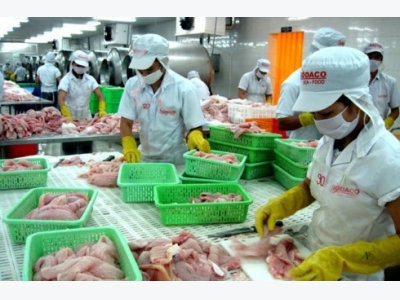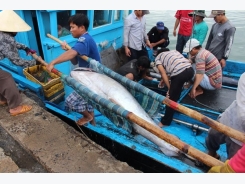President Trump calls for balanced US seafood trade

US President Donald Trump has declared June 2017 to be National Ocean Month during a speech in which he promised to bolster global exports of his country’s seafood industry to rebalance trade.
“The fisheries resources of the United States are among the most valuable in the world,” said President Trump.
“Growing global demand for seafood presents tremendous opportunities for expansion of our seafood exports, which can reduce our more than US$13 billion seafood trade deficit,” he noted.
In later remarks regarding the declaration, Trump added that the US has yet to fully leverage modern technologies and unleash the forces of economic innovation to more fully develop and explore the ocean economy.
In other seafood-related news, after a May 31 meeting between President Trump and Prime Minister Nguyen Xuan Phuc during the latter’s state visit to Washington DC, the White House released a statement pledging to continue to work together to seek resolution of issues related to catfish trade.
During the meeting with President Trump, Prime Minister Phuc had suggested the US abolish the FSIS inspection program that threatens to shut off all exports of catfish from Vietnam to the US effective September 1, 2017.
The Prime Minister requested that the responsibility for overseeing US catfish imports be transferred back to the Food and Drug Administration.
The Prime Minister’s appeal was in alignment with President Trump’s 2018 budget proposal to do just that— a move that potentially would avoid duplicative efforts and costs that could save an estimated US$2.5 million annually, according to White House officials.
After September 1, said Truong Dinh Hoe, secretary general of the Vietnam Association of Seafood Exporters and Producers, the Vietnam government must show that its system of monitoring those who grow, process, transport and store catfish is substantially equivalent to that of the US.
In addition, the Vietnam government must demonstrate that its inspection scheme as designed is put in place and is operating as designed, something that will prove to be extremely difficult by the September deadline.
In anticipation of being shut out of the US market, Vietnamese exporters have been doubling their efforts to divert shipments of catfish out of the US and EU markets to the Chinese market, where import inspections are virtually nonexistent.
Shipments of catfish to the US and EU markets for the first four months of 2017 were down US$85 million and US$65 million respectively, according to the latest figures from Vietnam Customs.
The decrease to these markets, however, was just about offset by an increase of catfish consignments to China of US$101 million for the January-April period, noted Vietnam Customs.
Catfish sales in the EU during the early months of the year have been hurt following the airing of a damaging Spanish exposé in early January that defamed Vietnamese catfish exports as being unsafe to consume.
The fundamental problems the catfish segment faces are lack of leadership among Vietnamese exporters, say most experts.
If those in the segment want to export their products to the US or other markets such as the EU, they must up their game and be prepared to demonstrate unequivocally that their products meet with the highest of quality standards.
Consumers around the globe will not put Vietnam or any country on the honour system when it comes to food safety—customers need verifiable evidence that catfish exports are indeed safe, say the experts, not just empty words.
Có thể bạn quan tâm
Phần mềm

Phối trộn thức ăn chăn nuôi

Pha dung dịch thủy canh

Định mức cho tôm ăn

Phối trộn phân bón NPK

Xác định tỷ lệ tôm sống

Chuyển đổi đơn vị phân bón

Xác định công suất sục khí

Chuyển đổi đơn vị tôm

Tính diện tích nhà kính

Tính thể tích ao hồ



 Vietnam becomes largest shrimp provider in RoK
Vietnam becomes largest shrimp provider in RoK  Vietnam seeks to raise tuna exports to Japan
Vietnam seeks to raise tuna exports to Japan